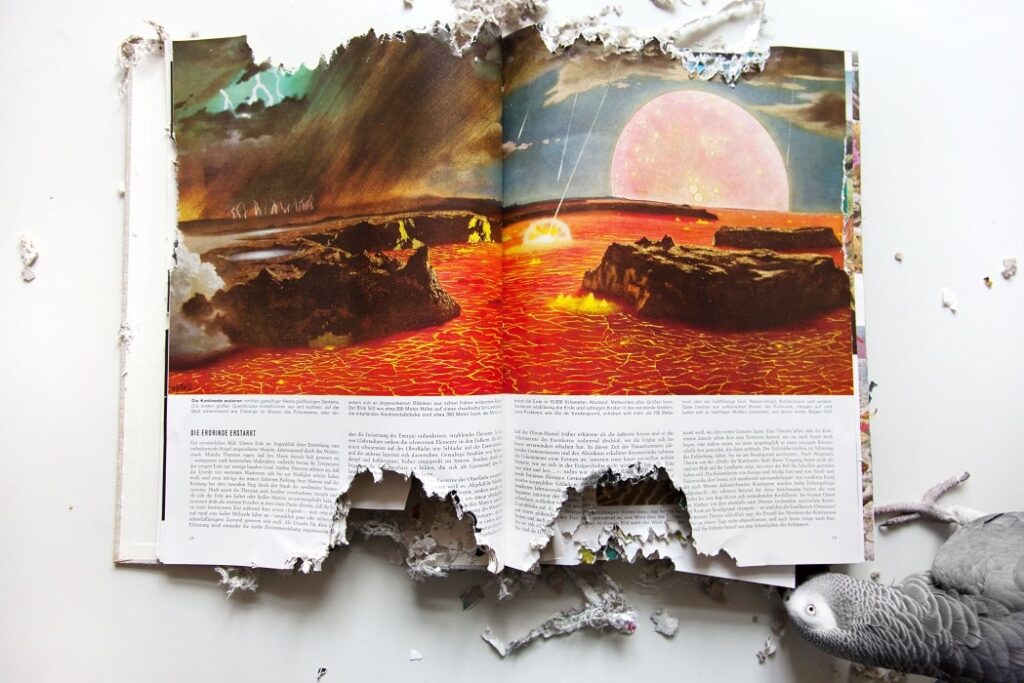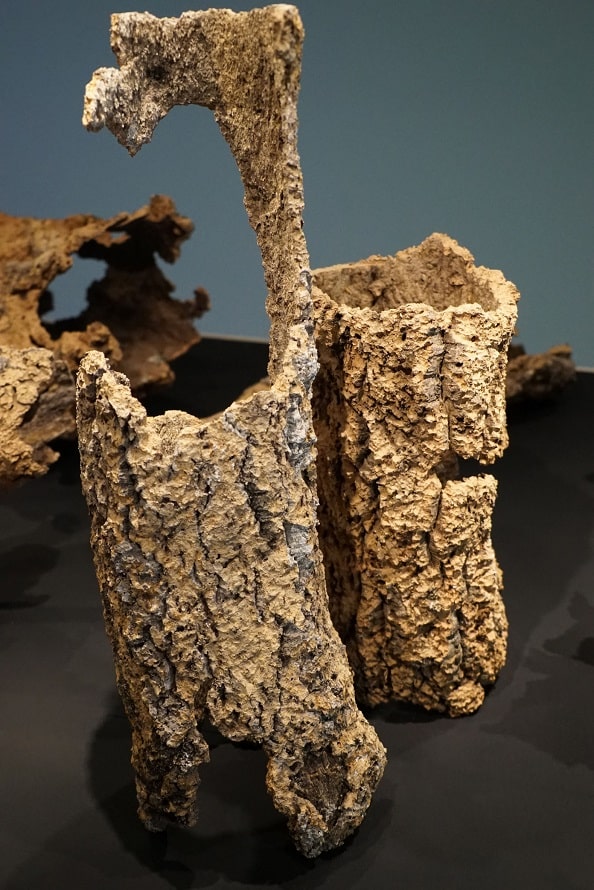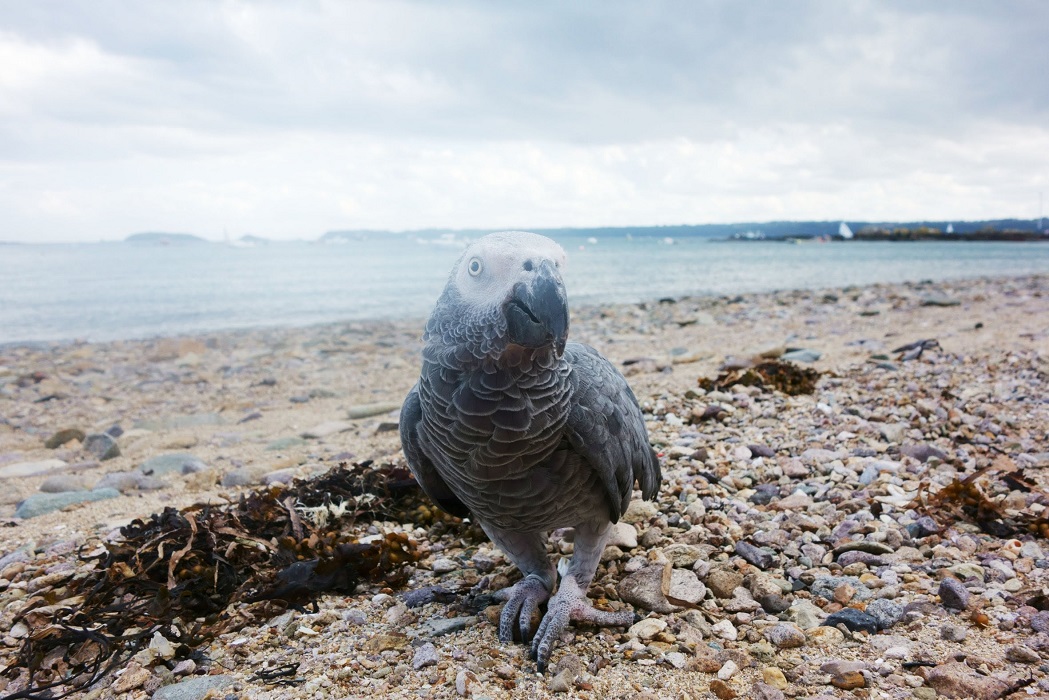The first paintings depicting grey parrots date back to the time when the transatlantic slave trade began. African grey parrots came to Europe on the same ships on the same trade routes that companies used to trade sugar and enslaved persons. Today, there are probably more African grey parrots living in human households worldwide than in their countries of origin in the wild.
Image above: Karl am Strand, 2016, Foto: Hörner/Antlfinger
The research and exhibition project Parrot Terristories by Hörner/Antlfinger revolves around the various territories and habitats in which grey parrots and humans meet – and have met historically. The exhibition at TA T – Tieranatomisches Theater in Berlin is the first to show all chapters of this body of work, which has been developed over the past six years in collaboration with numerous actors and institutions. In images, texts, films, sound works and installations, the artists explore the possible relationships between parrots and humans. Additionally, there will be a joint work with Nick Byaba (Parrot Tree Caretakers Association, Uganda), in which the relationship of wild grey parrots to their environment is examined.

Ute Hörner and Mathias Antlfinger are professors of multispecies storytelling at the Academy of Media Arts Cologne and have been living together in a multispecies household with grey parrots for over 20 years. Their installations, videos and sculptures deal with relationships between humans, animals and machines and open up critical perspectives on changeable social constructs as well as utopian visions of equal interaction. Their communal living with non-human animals is characterised by shared social actions and how these produce a shared space. In 2014, Hörner/Antlfinger founded the interspecies collective CMUK with the grey parrots Clara and Karl, who are also contributing artistic works to the current exhibition.
Non-human animals are individuals with their own will and experience, they have agency and are actively involved in the creation of the world. Recognising this animal agency is a central concern of Parrot Terristories. Even if current research remains largely anthropocentric, this approach has already been pursued in various disciplines since the so-called animal turn: Methods of multispecies ethnography, for example, incorporate the traces and perspectives of animal life and Critical Animal Studies examine, among other things, colonialities for non-human actors, i.e. the effects of colonial history such as the global trade in wild animals.

TA T is showing the exhibition in the context of research into material cultural heritage at the Helmholtz Centre for Cultural Techniques and the international Centre for Advanced Study inherit. heritage in transformation at Humboldt-Universität.
Supported by
Kunststiftung NRW
Capital Cultural Fund Berlin
Academy of Media Arts Cologne
Further cooperation partners
Dr Sylke Frahnert, Dr Katja Kaiser, Museum für Naturkunde Berlin (scientific-historical advice and loans)
Christine Bluard, Annelore Nackaerts, Royal Museum for Central Africa, Tervuren, Belgium
Prof Nancy Jacobs, Brown University
Dr Vanessa Wijngaarden, University of Johannesburg, University of Liège
WHERE?
Tieranatomisches Theater
Campus Nord, Philippstraße 13/Haus 3, 10115 Berlin
WHEN?
Exhibition dates: Friday, 11. October 2024 – Saturday, 29. March 2025
Opening hours: Tuesday – Saturday, 2 – 6 pm (closed on public holidays)
COST?
Free admission






